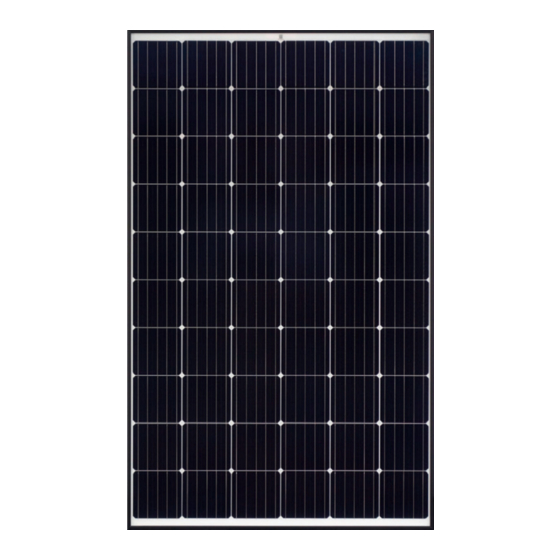- ページ 16
産業機器 Astronergy CHSM6610M/HVのPDF インストレーション・マニュアルをオンラインで閲覧またはダウンロードできます。Astronergy CHSM6610M/HV 18 ページ。 Crystalline silicon pv
Astronergy CHSM6610M/HV にも: インストレーション・マニュアル (19 ページ), マニュアル (19 ページ)

module. Do not press the cable hard. To secure the
cable to the rack in the proper way, specially
designed UV-resistant coils and cable clips must be
used. Avoid direct sunlight and water soaking to the
cable.
Keep the connectors dry and clean and make sure
that the nuts on the connectors are tightened before
connecting them. Do not connect the connectors
when they are damp, contaminated or in other bad
conditions. Avoid exposing connectors to direct
sunlight and soaking in water. Avoid the connectors
falling on the ground or the roof. Do not plug or
unplug the connectors when the PV module is in
live state. When it is necessary to remove the
connectors, ensure that the PV module is not in
working condition and that professional unlocking
tools and safety measures are used. Direct dragging
and pulling is forbidden.
The junction box of the PV module contains bypass
diodes connected in parallel to the string of the PV
module. The bypass diode in the junction box
prevents module degradation due to shading or
covering. Refer to the junction box diode
specification provided in the relevant product
datasheet for more details. When the localized hot
spot phenomenon occurs in the PV module due to
partial shading or coverage, the diode in the
junction box will start to work, so that the module
current will no longer flow through the hot spot cell,
so as to limit the heat and loss of the PV module.
When a diode failure is suspected or found, please
contact Chint Solar and do not attempt to open the
junction box cover.
6.3 Grounding
16
The PV modules are designed with an anodised,
corrosion-resistant aluminum alloy frame as a rigid
support. To ensure safety and to avoid lightning strikes
and electrostatic damage to the PV modules, the PV
module frame must be earthed. The earthing device
must be in full contact with the interior of the
aluminum alloy of the frame, penetrating the surface
oxide film.The following is the specific grounding
method, as shown in Fig. 15.
Fig. 15 Grounding the aluminum frame with copper wire
The grounding requirements must be checked in
accordance with the applicable regulations and
standards before work is started.
Use the marked 5.5 mm grounding holes to ground
the anodized frame. Use one M5 nut, two M5 cut
washers, one M5 plain washer, one M5 spring
washer, and one M5 bolt and the copper wire. All
nuts, bolts, and washers shall be of type M5 and
made of stainless steel (Fig. 15).
Insert the bolt through the cup washer and wrap the
copper wire around the bolt. (Note that the copper
wire cannot be attached directly to the aluminum.)
